Personal Bias
I firmly believe everyone connected to the audio business or who is a HiFi hobbyist has personal biases as they relate to amps, speakers, DACs, turntables or cartridge design. I most assuredly am not immune to these biases.
Although my current primary amplifier is a 200W per channel Arcam Sliding Bias Class “A” integrated amp (or what Arcam calls Class “G”), my personal preference is a Single-Ended Triode Tube amp. However, my choice of Arcam comes down to what works well with my primary speakers. I have used Acoustat 2+2 full range electrostatic speakers for over 30 years, but they are current hogs. Many years ago, I had them attached to a McIntosh 300 watt per channel stereo power amp (which was an excellent power amp) but they sucked every watt and bit of current from the design and still wanted more. I have used dozens of both tube and solid-state amps on my speakers and come to the realization that high current solid-state trumps ethereal tube musicality.
I have considered changing my primary speakers but again it comes down to personal taste. For me nothing sounds as RIGHT as electrostats. There are newer excellent and more efficient electrostatic designs like Martin Logan, but the advantages don’t outweigh the cost disadvantages. The reason for this confession is to make you the reader aware of my personal biases upfront.
Purpose
The purpose of this article is to talk about amplifiers. I will be commenting on both solid state and tube designs, plus the most common variations of each. I plan to cover the characteristics of each and the positives and negatives of each design.
In this discussion I will concentrate specifically on Power amplifiers. Everything discussed will also apply to integrated amps as well. To be clear, an integrated amplifier includes both control and amplification in one chassis.
First I need to explain how we identify what an amplifier is. Basically, how I define an amplifier.
What is an amplifier?
Simply put, an amplifier is a device that increases the output of a low-level device such as a preamplifier (control section) or source component (devices with a voltage output typically with less than 5V of output)and proportionally increases the output signal to a wattage capable of driving loudspeakers or headphones.The amplified difference between the input and output signals is known as the Gain of the amplifier.
Amplifier circuits can be either a standalone device such as an audio power amplifier or also part of another type of circuit, such as a phono preamp which has an amplifier stage in conjunction with an equalizer stage. Also, there are solid state devices (referred to as either IC or LSIs) that are all in one amplifier circuits on one single chip. But for this discussion I will concentrate on Power Amplifiers as standalone electronics.
Needless to say, amplification is at the core of all electronics today and for that matter has been since the early years of development. An amplifier is key to our ability to listen to reproduced music and sound in general.
Although technically amplifiers can be categorized in a number of different ways such as broadcast or RF amplifiers, or low-level amplifiers.Again this article will only discuss audio amplifiers for consumer electronics.
Here is a little bit of history. According to Wikipedia; “The first practical electrical device which could amplify was the triode vacuum tube, invented in 1906 by Lee De Forest, which led to the first amplifiers around 1912.” Interestingly enough we still use similar tube technology today, over a hundred years later. But today most amplifiers use transistors, (invented in 1947). An interesting fact is there are more and varied tube amplifiers produced today than anytime in history.
Usually in past articles I tend to go off on a tangent talking about the history of what ever I am writing about, but in this case I will leave the history of amplifiers and amplifier design for a future article. For those of you interested in such things, I apologize.
What are the basic sections that make up an amplifier?
Amplifiers are made of multiple sections. Each with a specific purpose or function. This is regardless of whether we are talking about tube type or solid-state amplifier designs.
Basically, an amplifier is made up of a power supply, which consists of a transformer and voltage rectifier. This portion of the amp converts the AC power from the wall and converts it to DC which is then utilized by the output stage of the amp.
Next is the Pre-driver stage. This is the first stage of amplification. Taking very small input voltages and increasing them to higher output voltage. When a pre-driver stage is present the amplifier is often referred to as a dual stage amplifier. The first stage increases voltage and the second stage increases amperage (current). Although technically the pre-driver stage is not critical in all amplifier designs, it is common in most modern amplifiers.
Finally, we have the output stage, which is where the current is produced within the amplifier.Making the gain produced more usable by the speakers.
What are the 4 basic classes of amplifiers?
Whether we are talking about tube or solid-state designs, the class of amplifiers are basically the same. There are more variations in solid state designs than tube designs and I will cover that in each case.
Both Class “A” and Class “AB” amplifiers can be either Tube or Solid State.
Class “D” and Class “G” amplifiers by their nature are only Solid-State designs.
There are other amplifier designs, but they are rarely used or even considered in modern amplifier designs. They include Class “B”, Class “C” and Class “E”. But for clarity and efficient use of space I will be ignoring these designs because they are not typical to consumer electronics today.
In Class “A” designs the output device is always on. In amplifiers like a tube single ended triode (SET), for example, the amplifier uses a single output tube that produces both sides of the wave form. I should also note a couple things about SET designs. They are the least efficient design produced and are noted for their heat output. I should comment that most audiophiles consider Class “A” designs to be the best sounding amps. These characteristics also hold true in solid state designs.
In a Class “AB” design the output device switches on and off. Class “AB” amps are often referred to as having a push–pull output stage and usually uses some overall negative feedback. This type of amp can use either Bipolar Transistors, FETs or Vacuum Tubes. In an AB design one side of the audio wave form is handled by one or more devices and the opposite side of the wave form is handled by a complementary one or more devices. Because each side of the circuit is off half the time these types of amps run cooler and are more efficient. In solid-state amps the transistors are called NPN (negative positive negative) and PNP (positive negative positive) transistors which describes their actions in the circuit.
I will skip ahead to Class “G” which is also referred to as a Sliding-Bias Class “A” design. This is a combination of both Class “A” and Class “AB”. This type of amplifier starts out as a Class “A” amp and at a given power rating switches to a Class “AB” amp. The advantage of this design is it has the sonic advantages of a Class “A” over most of the amplifiers use while still having the high dynamic capability of high-power Class “AB” amps.
(8/21/19 – Publisher’s note: Previously, Marc mentioned two companies that he believed was employing the Class G Sliding-Bias circuitry. We have received notice from one of the companies, advising us that Marc’s claim was incorrect. The company names are now removed.
We extend our apology to the companies for causing confusion and inconvenience.)
- (Page 1 of 2)
- Next page →

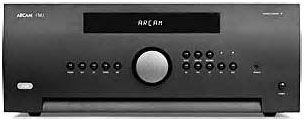
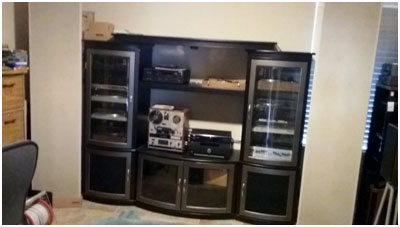
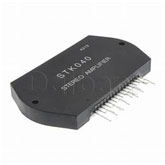

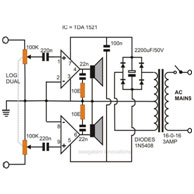
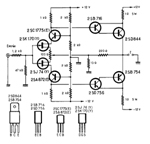

Excellent article. I was into tubes for 20 years, then moved to solid-state. There are newer transistors, like Thermal-Trak and GanFet which are doing a great job of removing the old nasties of transistor gear.
Extremely educational, very insightful and well-thought-out and comprehensive.
Signal doesn’t like cables to reach the speakers which, after reaching wonder shape, enters the squeezed tunnel to travel your destinations. Power amp should be inside sp cabin; number two, if I were a signal would like to be amplified in my private zone why to run all together with other frequencies, result band should be separated by transistors, this will impact low distortion too. Conclusion, there are enough material in market both tube or semi-conductor. To overcome those restrictions but anyhow system still evolve around class A, B, etc.
Thanks for teach us the basics and lesson to learn.
I am glad some people are getting something out of the articles I write. I have two more soon to be released. One is Speaker Technology. Hope you like them.